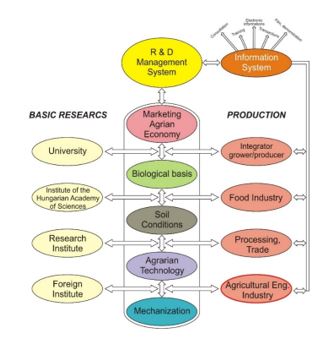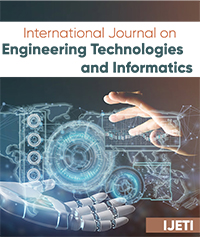Information Systems in the Marketing Conscious Development of Agricultural Technologies
László Fenyvesi*
Faculty of Mechanical Engineering, Institute of Machinery and Informatics, Szent István University, Hungary
*Corresponding author: László Fenyvesi, Szent István University, Faculty of Mechanical Engineering, Institute of Machinery and Informatics, Páter K út 1, 2100 Gödöllő, Hungary
Article History
Received: December 12, 2020 Accepted: December 14, 2020 Published: December 14, 2020
Citation: Fenyvesi L. Information Systems in the Marketing Conscious Development of Agricultural Technologies. Int J. Eng Tech & Inf. 2020;1(1):01‒02. DOI: 10.51626/ijeti.2020.01.00001
Opinion
Agricultural information systems have significantly developed for recent decades. We can collect data about the plant and the environment in a site-specific way during the growing process. We can also do this during the intervention, for example, we apply the fertilizer according to the needs of the given place. Solutions are available to ensure the required accuracy, fast data transfer and processing. This systems and methods are collectively called: precision farming. Methods using artificial intelligence (e.g. damage detection) have emerged in many areas of agricultural production, but the development of technologies is basically done in a “traditional” experimental way. The question is: how can we solve technology development continuously in a space-oriented way? Continuity is needed because there are no two “equal” years, biotic and abiotic stress effects occur differently. Farmers even know from experience that no two equal fields. Therefore, the production technology must be continuously developed in the given area. It is not possible to achieve optimal production everywhere with a general method. In addition to precision farming, how can precision technology development be solved?
For the answer, let’s investigate the agricultural technology from development point of view! (Figure 1).
Figure 1: Connections of market-conscious development of agricultural technologies.
Agricultural production technologies are significantly different from industrial ones. The realisation of a successful product on the market (e.g., foods, tourism services) requires the close cooperation of many independent disciplines. Very different areas, from economics to technical sciences, play a key role in product competitiveness, determining it with the production line. This system of relationships plays a crucial role in the development of technology, much like the backbone of living structures. That’s why I call this the spine column of innovation. Here, too, the relationships are two-way, and the order is not quite arbitrary. The market success of the product, and therefore the economic knowledge, is crucial. Biological and environmental conditions can further narrow the room for manoeuvre. The last “vertebra” is the mechanization, since this area is best defined, best “scalable”.
The achieved research and production results (methods, machines, seeds, simply inputs) must be used, in the outlined agricultural technology development at the given farmer! The organizations that create inputs are usually independent, and their results are realized based on their usability. Two large groups can be distinguished between the input producers: the research and the production organizations. The results achieved in different parts of the world must be applied by a farmer, optimized for a given product, in a given place. In addition, time as well as the realization speed are key, because for instance the stress effects occur quickly. Mostly this is the reason why the Information technology is playing an increasingly important role in achieving this. Next to the “traditional” forms of information transfer (exhibitions, demonstrations, in a word professional extension), new solutions must be developed that well support the farmer in making the right production decisions.
The digital solution must be implemented that ensures the continuous marketing-conscious technology development at the farmer. This system is installed in the farm, uses the collected internal information (e.g., soil, plant conditions, which were collected by sensors) and the outlined input producers results, and communicates with national and international databases. It constantly collects, stores and evaluates the production data for self-learning developing system. The characterised development system should be constructed along product lines (crops, dairy- meat production, etc.) according to the outlined scheme.
The management of the data is two-way: one part is on farmer’s own property, they are related to the production, the operation, , the accounting (revenues, costs). The use of this information is regulated by laws (e.g., tax regulations, GDPR regulations). The other part of the data is general (e.g., the relationship between soil and cultivar type characteristics and yield) and would be transmitted to the central database. By the BigData examining of this well-structured datasets, commonly used relationships could be established. A system could be implemented that provides objective, data-based information on, for example, the performance of individual seeds and hybrids. The system would provide significant support for selecting the appropriate inputs.
This aim can be achieved through significant development of agricultural information solutions. The system can also have a major impact on input producers. As a result of the feedback, well-managed research and development could start, even with international collaboration. It is known that the potential productivity of agriculture is greater than current production. The increase of production, that can be achieved with an optimized system, benefits the entire national economy. The realisation of the outlined system is also an important step in reducing harmful environmental impacts, as individual environmental goals and regulations can be well integrated.


